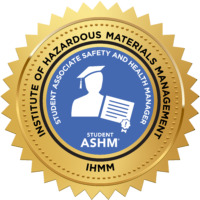Environmental and Occupational Health
What is Environmental and Occupational Health?
Environmental and Occupational Health is concerned with the health effects of individuals and populations when exposed to air and water pollution, pesticides, organic solvents, dusts and physical hazards, which occur in the environment, the home or the workplace. Occupational safety evaluates and provides interventions to reduce risk of injury and illness using ergonomics, human factors and wellness for future, current and past workers.
Scholarship and Credentials
Occupational safety and health specialists are critical to ensuring the safety and health of the nation’s worksites and workforce. The program addresses the shortage of qualified occupational safety and health professionals by delivering a high-quality program via a combination of on-campus and distributed learning technologies. The school’s commitment to and investment in innovative distributed learning technologies offers the ability to attract a diverse student body to the program. Students accepted to the program may qualify for traineeships offered through the program.
The Occupational Safety and Health Training Program at the Texas A&M University School of Public Health delivers focused training in occupational safety and health, with available concentrations in safety, health, and ergonomics for masters level students. Students completing the program will possess knowledge and skills in the general concepts related to occupational safety and health, ergonomics, industrial hygiene, occupational disease, human anatomy, user-computer interaction, displays and controls, information processing, industrial process safety, epidemiology, vibration control, and statistics.
The Occupational Safety and Health program has a long history of producing highly qualified safety practitioners. The success of the program is demonstrated by the aggressive recruitment of School of Public Health graduates by industry, healthcare, academia, and governmental agencies. School of Public Health faculty have extensive expertise and experience in safety and health, medicine, engineering, industrial hygiene, and ergonomics. The program’s critical ties to industry partners enables not only field training opportunities for students but placement of graduates in professional positions with these industry leaders.
Qualified students in the training program may pursue their degree through a combination of on-campus, distance learning, or distributed learning methods.
To learn more about the training program and traineeships, contact:
The Texas A&M School of Public Health’s Master’s Degree of Public Health in Occupational Safety and Health has been reviewed by the Board of Certified Safety Professionals (BCSP) and approved as a Graduate Safety Practitioner® (GSP®) Qualifying Academic Program (QAP), providing the program’s graduates the option to apply with BCSP for the GSP designation within one year post graduation.

The GSP meets the credential requirement for the Certified Safety Professional (CSP), the “gold standard” in safety certification, allowing those who hold the designation to waive the Associate Safety Professional (ASP) certification examination. It demonstrates accomplishment and commitment to professional development.
IHMM’s Student Associate Safety & Health Manager (ST/ASHM™) credential recognizes students who wish to demonstrate their development of knowledge and skills in safety and health management in the workplace while pursuing their undergraduate or graduate degree. Student ASHMs are also eligible for the IHMM Dr. John H. Frick Memorial Scholarship, a $32,000 program to assist our student certificants with the costs of their education.

After your Student ASHM designation, you earn your Associate Safety & Health Manager [ASHM] designation along with your degree. There’s no exam required to earn this credential. The Associate Safety & Health Manager (ASHM) credential is an important stepping stone to the accredited Certified Safety and Health Manager (CSHM) credential. Students earning their degree from an approved institution only have to demonstrate two years of experience, instead of four, to sit for the CSHM exam.
Student ASHM Logo – https://ihmm.org/student-ashm/
ASHM Logo – https://ihmm.org/ashm/
Approved Schools – https://ihmm.org/ihmm-abet-approved-schools/
ONLINE MPH IN ENVIRONMENTAL HEALTH
Your schedule limitation won’t hold you back with the distance education degree program in environmental health that gives you the flexibility to learn from anywhere! Graduates of this program complete courses such as Risk Assessment, Hazardous Materials Management and Compliance, and Project Management in Health Systems, which prepare them to serve in high-impact areas from regulatory compliance to consumer safety monitoring and managing environmental exposures that could impact health.
Strong Industry Partner Relationships
The department has strong university-industry commercialization ties with 32 patents by faculty. Leaders from various industries serve on the Industrial Advisory Board ensuring faculty are aware of the training students need in an ever-changing competitive workforce. The department has a 98 percent job placement at graduation with starting salaries averaging $90,000. Our graduates currently serve in a wide range of industries in a variety of leadership roles:
- Regulatory Affairs Specialist, Johnson and Johnson
- Environmental Health Safety Engineer, SpaceX
- Senior Manager, EHS, Tesla
- Global Environmental Health & Safety, Amazon
- Associate Director of Environmental Health & Safety, Texas Tech University
- Scientific Director, National Center for Human Factors in Healthcare
- Risk Management Services Representative, Philadelphia Insurance Companies
- Senior Health, Safety and Environmental Coordinator, ISN Software Corporation
- Health and Safety Manager, Holly Frontier
- Special Assistant to the Director, Office of Ground Water and Drinking Water, Environmental Protection Agency

Faculty and Research
Our faculty represent a wide array of disciplines, expertise, and interests within Environmental and Occupational Health. Their backgrounds include public health, industrial engineering, human factors, toxicology, environmental chemistry, and epidemiology.
Notable faculty studies and projects include:
- Development of assessment tools for office ergonomics
- Investigations into effective procedure writing and displays
- Occupational safety interventions
- Environmental carcinogenesis
- Border health
- Asthma education and management
- Innovative strategies for removal of environmental contaminants